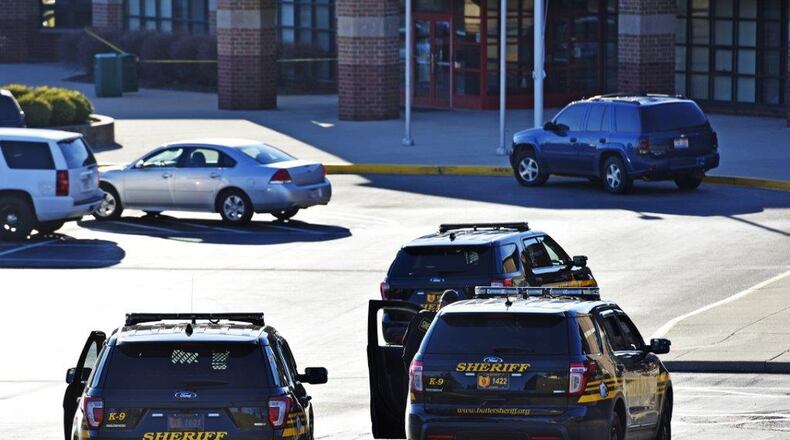MORE: Shootings at K-12 schools in Ohio in the past 50 years
“School-communities that experience school shootings often follow very similar patterns of dynamics (that) typically begin with shock that a shooting happened in their school and community,” said Trump, whose Cleveland-based organization monitors and advises school districts nationwide on dealing with shootings and other violence.
“The initial focus turns to the victims, shooter and public safety response. Attention then moves to the emotions and impact on students, school staff, parents and the community. The focus then expands to the adequacy of security, lessons learned for emergency preparedness planning — what worked and what didn’t — and whether more intensified security measures such as metal detectors are needed,” said Trump.
Those lessons are passed along to other districts, including the West Liberty-Salem community, which is in the process of healing after a student fired a weapon and injured two classmates in January.
“Long-term grief counseling, community healing and related topics tend to round out the process. This process, particularly attention to the grief and healing, can go on for months and even years,” he said.
RELATED: Armed teachers in schools? Butler County sheriff thinks it’s a good idea
It’s been almost a year since then 14-year-old James Austin Hancock shot and wounded two classmates and two other teenagers in the cafeteria of Madison Junior/Senior High School in Madison Township.
Local school officials — working in close coordination with local police — scrambled to swiftly secure first the safety of its single campus and then ease the concerns of students, school staffers and school parents.
Madison school parent Susan Snelling was among them and looking back at the shooting a year ago her appreciation of school officials’ handling of the deadly violence has grown with time.
“I’d give school officials an A+ for their handling of it,” said Snelling, whose daughter was in the school but did not witness the shooting.
She shared the community’s stunned initial reaction.
“I remember thinking this doesn’t just happen in other places because now it has happened in our small community,” recalls Snelling.
She praised the district’s use of multiple communications via social media to update parents and community residents on the crisis.
The healing started quickly
For Snelling it started with a kitchen table talk that evening.
“My husband and I sat down with her (daughter) and talked to her, reassuring her and asking what questions she had or what she needed,” she said, adding it was a scene repeated among school families throughout the district.
“I think it has opened a regular dialogue between parents and children. And I know it has definitely strengthened the community,” she said.
Trump said “one of the immediate goals for school officials is to return school operations to some sense of normalcy.”
Madison School officials said they prefer not to comment on the one-year anniversary of the shooting.
MORE: How parents can help children cope with feelings after trauma
“Typically this involves minimizing any closing of schools except for the time needed for law enforcement to process the crime scene and for school leaders to brief teachers and staff on resuming operations. The goal is to get kids back in school, provide counseling support to those students who need it, reassure the school-community of safety measures in place moving forward and getting back to the educational routine,” said Trump.
“Psychologically the routine is beneficial to all, especially students, and prolonged closures or delays in resuming the educational process can only contribute to increased anxiety,” he said.
Snelling said the Madison Schools’ community is a healed one.
“A lot of things could have gone so much more wrong that day,” she said. “It has forever changed everyone but we can overcome this.”
Healing continues in West Liberty-Salem
In another rural Ohio community, about 90 minutes from Madison Twp., the process of healing is just beginning.
A shooting in West Liberty-Salem High School on Jan. 20 left one student critically injured and a tight-knit community where most families know each other badly shaken.
Fewer than 2,000 people live in the village of West Liberty, which lies on the border of Champaign and Logan counties. The village’s website touts it as a quintessential Midwestern small town with outdoor attractions like caverns and skiing and a variety of antique shops and small stores selling homemade candies.
There’s often a perception that rural schools are less likely to face a school shooting. But the evidence shows otherwise, according to Trump.
“We have been seeing an anecdotal uptick in gun-related school incidents in the headlines the past year or two,” Trump said. “We know that it really doesn’t make a difference whether we are talking about rural, suburban or urban school settings.”
Download the free Journal-News app, Butler County’s #1 source for local news
About the Author
